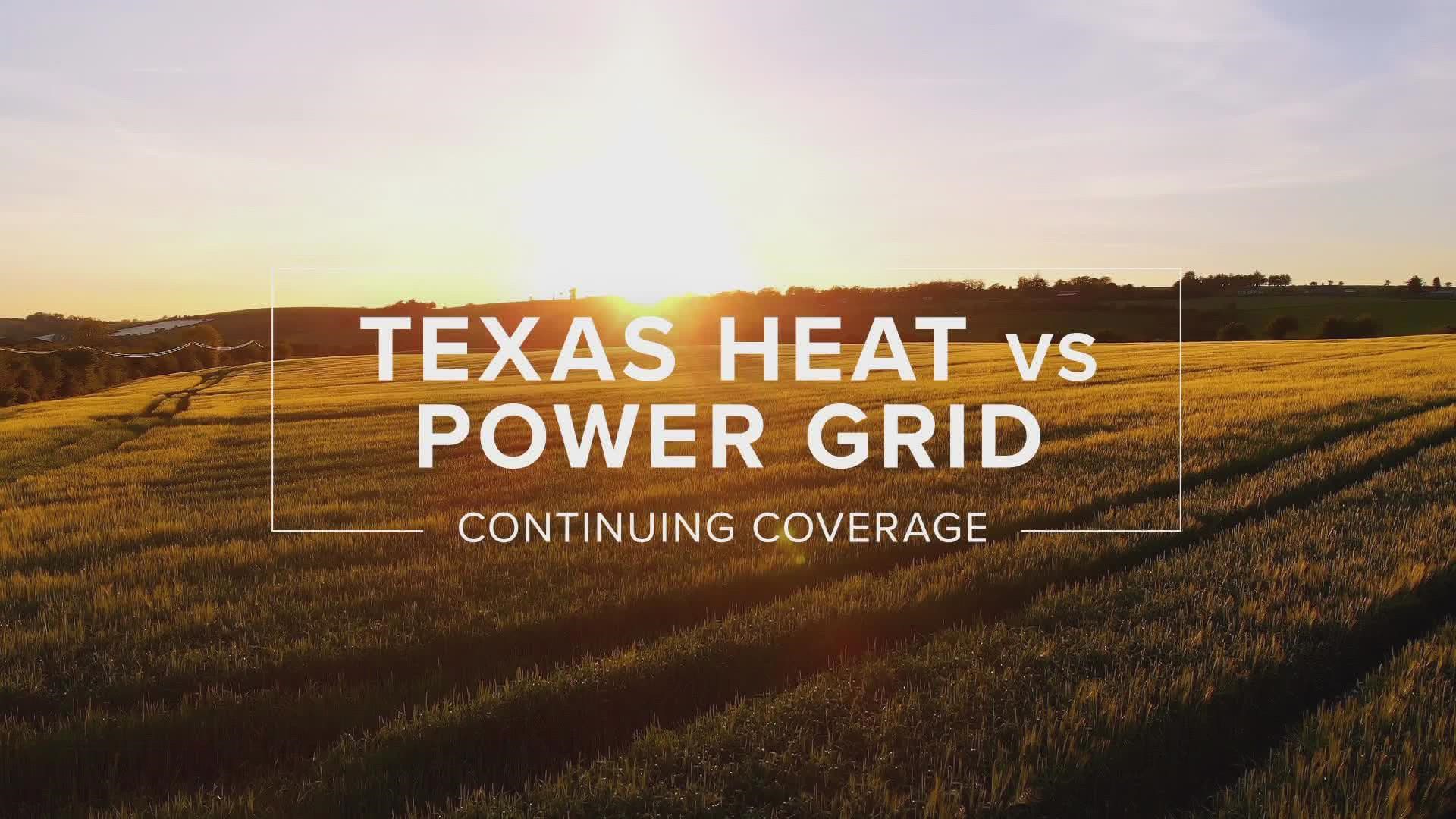TEXAS, USA — ERCOT asked Texans to conserve energy for the second time this year as Monday brought blistering temperatures over 100 degrees and wind generation all but died in the middle of the day.
The organization did not call the situation an emergency, though ERCOT said in a news release, "the Electric Reliability Council of Texas (ERCOT) is issuing a Conservation Appeal, asking Texans and Texas businesses to voluntarily conserve electricity" and further stated "This notification is issued when projected reserves may fall below 2300 MW for 30 minutes or more."
Gov. Greg Abbott said on the same day, "What they called for today is just voluntary conservation measures which is one of the tools in the toolbox and Texans typically volunteer to help out."
Back on May 13, ERCOT "asked" Texans to conserve energy for a weekend after, according to a release, "six power generation facilities tripped offline resulting in the loss of approximately 2,900 MW of electricity. At this time, all generation resources available are operating."
ERCOT CEO Brad Jones later said in a press conference this was not an "Alert".
"This was not a conservation alert, this was not a conservation appeal, this was just a conservation request to Texan's to help us out over this weekend," Jones said.
But calling a situation an "appeal" or an "ask" is not helpful for Texans who want to understand exactly how much trouble the grid is in. So 6 News dug into ERCOT's Summer emergency Alert Overview (ERCOT made this link directly download a word document) and spoke to an ERCOT representative on how the public can actually understand the power situation as it is displayed on ERCOT's website.
So what is and is not an emergency situation on our grid? Here's what we found out:
The most important data needed to understand current grid conditions is in the Supply and Demand graphic on ERCOT's website and the amount of "operating reserves" listed under grid conditions.
Story continues below.


The operating reserves, shown above as "4,400 megawatts," is included in the purple "committed capacity" line in the Supply and Demand graphic which shows the total power available to the grid. An ERCOT spokesman said "operating reserves" represents all power generators that are currently running and have power to immediately support demand. Committed capacity also includes additional generation power that is not currently on but is available to turn on.
If the grid's current committed capacity show more power available to the grid than just the operating reserves (capacity-demand = more than operating reserves), then the grid is in good condition.
So when should Texan's be worried? ERCOT's current emergency protocols kick in when "operating reserves" (again the 4,400 megawatt figure highlighted in the image) falls below a certain threshold.
If operating reserves are less than 3,000 MW for more than 30 minutes, or if ERCOT has projected this to happen, ERCOT will take several actions including: ordering all available generation online, asking the public for conservation, and ask small industrial customers to reduce their power for up to 30 minutes.
ERCOT protocols do not classify this situation as an "emergency".
If operating reserves drop below 2,300 MW, and are not expected to recover within 30 minutes, ERCOT goes into Energy Emergency Alert "Level 1."
According to ERCOT's Summer emergency Alert Overview, ERCOT will attempt to increase generation by importing power from neighboring electric grids up to 1,220 MW, and by paying commercial or small industrial customers to reduce their power use which can save a total of 895 MW.
ERCOT was expecting to be under 2,300 MW according to their press release this week but did not specifically call this a "Level 1 Energy Emergency Alert."
If the operating reserves fall below 1,750 MW ERCOT will issue a "Level 2" alert and will try to get 1,591 MW back by having large industrial customers turn off their power.
Finally, if the operating reserves fall below 1000 MW, or if ERCOT expects this will happen ahead of time, ERCOT will then "instruct transmission companies to reduce demand on the electric system" which they will do by creating "controlled outages" according to the document. These outages last occurred during Winter Storm Uri.
The overview also specifically states that a combination of high temperatures and a lack of wind could lead to issues. It specifically states, "Sustained above-normal or extremely high temperatures across major metropolitan areas combined with generation outages and low wind or solar generation may result in tight operating conditions."
On Monday, available wind generation fell to less than 1000 MW during the day, and 90 percent of the states wind generation was unavailable due to lack of wind in the state.
Texas Competitive Power Advocates Executive Director Michele Richmond told 6 News 95 percent of the states thermal generators (plants powered by natural gas, coal, or nuclear power) had gone online to meet the states energy demand. This left the state little to no additional generation available if some of the thermal plants were to trip offline.
"It is definitely a problem. We have a lack of installed capacity for additional generation for when we need it," Richmond said. "On days when the wind drops off we absolutely need that (thermal) capacity and we have not have a market that says 'we value those resources.' That's what we need."
Richmond said the state simply need additional large thermal plants to help carry the power load in these situations. She said the Public Utility Commission is still working on a "power market overhaul" that could help better incentivize power generators to build plants in the state.

